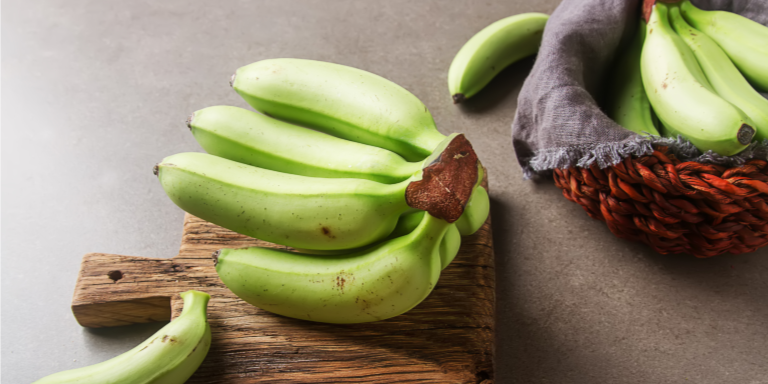Many of the chronic degenerative diseases in the United States could be prevented or reversed by avoiding simple sugars and high-starch foods. The most common starchy foods, including bread, cakes, and noodles, contain a large percentage of highly digestible starch which rapidly breaks down into glucose, causing unsafe spikes in blood sugar and insulin.
Because readily digestible starches contribute to chronic disease, starches that are resistant to digestive enzymes have been the focus of research recently. Resistant starches, as they are called, are unique. They pass through the stomach and small intestine intact. Once they reach the large intestine, however, resistant starches are fermented by bacteria, producing important metabolites, including short-chain fatty acids. These metabolites have important biological effects which can lead to improved physical and mental health.
There are five types of resistant starch:
- Type 1: Starch encased by indigestible plant cells walls. Found in some beans, lentils, grains, and seeds.
- Type 2: Starch that is inherently indigestible in the raw state. Found in raw potatoes and unripe (green) bananas, plantains, mangos, and papayas.
- Type 3: Also known as retrograded starch, these starches become ingestible when they are pressure-cooked and then immediately cooled (refrigerated overnight). This causes the starch molecules to bond to each other more tightly. Even if the food is reheated, the resistant starch remains. These are found in cooked and cooled potatoes, beans, lentils, and grains.
- Type 4: This type of starch isn’t found in nature, but is a man-made starch, chemically modified to become resistant to digestion. An example is hi-maize resistant starch.
- Type 5: Starch bound to lipids (fats) high in stearic acid. Examples include beans, lentils. and grains pressure cooked with sesame oil.
The healthiest resistant starches are types 2, 3, and 5, focusing on gluten-free and low-lectin foods (click here). Combining types 3 & 5 (pressure-cooking with sesame oil then cooling) will increase the amount of resistant starch even further. Eating resistant starch might seems counterintuitive if you have been told that a low-carb diet is healthier. A low-carb diet is healthier, but resistant starches are the exception. It’s all in how the food is prepared. You should aim to include a serving of resistant starch food with each meal.
Resistant starches and the resultant short-chain fatty acids have been found to have the following remarkable health benefits:
- Reduces and stabilizes blood sugar levels and increases insulin sensitivity.
- Reduces cholesterol and triglycerides.
- Reduces calorie intake and promotes satiation (feeling full after eating), which can lead to weight loss and easier weight maintenance.
- Promotes the integrity and function of the gut lining; prevents and treats “leaky gut” (intestinal hyperpermeability), inflammatory bowel disease, and colon cancer; improves gut motility (relieves constipation and diarrhea); and enhances the elimination of waste products and absorption of vitamins, minerals, and electrolytes.
- Binds to and helps expel “bad” gut bacteria while feeding and increasing the population of “good” bacteria. This enhances the production of biotin, folate, and vitamin K, which can only be produced by good bacteria.
- Reduces inflammation, oxidative stress, and autoimmunity.
- Brain health: Helps prevent Alzheimer’s and Parkinson’s disease, improves sleep, and helps calm and stabilize moods (combats anxiety, depression, mania, and addictions).
Most healthy people will tolerate resistant starch just fine, but for those with poor gut health, resistant starch can cause excess gas and abdominal discomfort at the beginning. To lessen this reaction, decrease the amount of resistant starch and take a high-quality probiotic (click here). It will take a few weeks as the body adapts to the resistant starch and converts it to usable short-chain fatty acids. For more information about resistant starches, read The Resistant Starch Bible by Chase Williams (click here) and The Starch Revolution: Resistant Starch Cookbook by Bethany Silver (click here).
